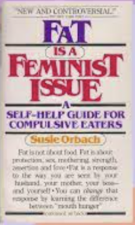The struggle for equal pay dates from way before the nineteenth century. Women have campaigned rarely knowing of the women who have gone before. The identities of many are lost in the past, although reinstatement has sometimes come through the persistence of women activists.
The ages of women activists span decades. Some have worked with one another. Some have known of one another from afar. Some have not known the others existed, or of their struggles. So it was that although they did not know it at the time, in appearing in the Commonwealth Conciliation and Arbitration Commission for WLM in the 1970s, Zelda D’Aprano and Sylvie Shaw had their forerunners. In 1950s Melbourne, Cathleen (‘Kath’) Williams of the Liquor Trades Union joined the struggle, bringing enlightenment to men of the trade union movement wherever she could.[1] She was spurred into action by reports from the ACTU Congress, held in Sydney in 1953, where the call went up for equal pay legislation:
‘That this Congress calls on the Federal and State Governments to legislate for the provision of equal pay for the sexes in all occupations and, in the first instance, to grant equal pay to their own employees. We call upon the ACTU to establish Equal Pay Committees to undertake the task of campaigning for legislation and to arouse the interest of male and female workers in the demand for equal pay; such committees to be co-ordinated on a national basis by the Executive of the ACTU.’
Yet in turn, Kath Williams did not know the story behind the motion: that, spurred on by the activism and agitation of women within and without the trade union movement, women in the NSW FCU had drafted it, then ferried it through the FCU to have it put to the Congress. Nor did she know that on the first day of the Congress, Albert Monk, ACTU president, had been approached by Della Elliot to say she had the motion and wished to move it. Under Congress rules, delegates had stand in the aisle to await the call from the president, signifying by waving a hand that they had a motion to put, then moving to the microphone. For four long days, Della Elliott leapt into the aisle at every opportunity, raising her hand and waiting for the president’s call. Then, on the last day, minutes before closing of the Congress, it came. She was at the microphone in a flash, the motion was called and seconded by a male right-winger from the Clerks. Then it was through. [2]
Neither did Kath Williams and her fellow unionists, women and the men who worked with them to ensure that the motion was implemented, know of the stringent dressing down Della Elliot suffered after it went through. She had beaten another Congress delegate, Jack McPhillips, to the call. Seeing her as having usurped his place, he roundly chastised her. Why should his resolution on a matter of international importance take second place to hers – a woman’s issue?
Yet the impact of the motion resonated around Australia. Activist women members like Kath Williams persuaded all state Trades and Labour Councils to follow through by setting up Equal Pay Committees. Dominated by men, sometimes the activism of women was subverted, but nonetheless the Committees were there. They gave the women a platform and room to demand action and change.
That platform built on the work of women before them, and provided a base for women of the 1960s and 1970s to make their demands for equal pay. When women of the 1980s came forward to take their place in the struggle, they stood on the shoulders of women going before. The activism and intelligence of the 1980s struggle would not have been possible without the activism and intelligence of past decades. The named and unnamed went into the 1980s with a continuing demand for equal pay.
Jocelynne A. Scutt (c) March 2005
[1] See Zelda D’Aprano, Kath Williams …, 2001.
[2] Condella (‘Della’) Elliot, Personal Communication, Sydney, NSW, 1994 (June 1994). Kath Williams’ biography, Zelda D’Aprano, Kath Williams …, 2001, confirms this lack of knowledge about the resolution’s origin and passage.










